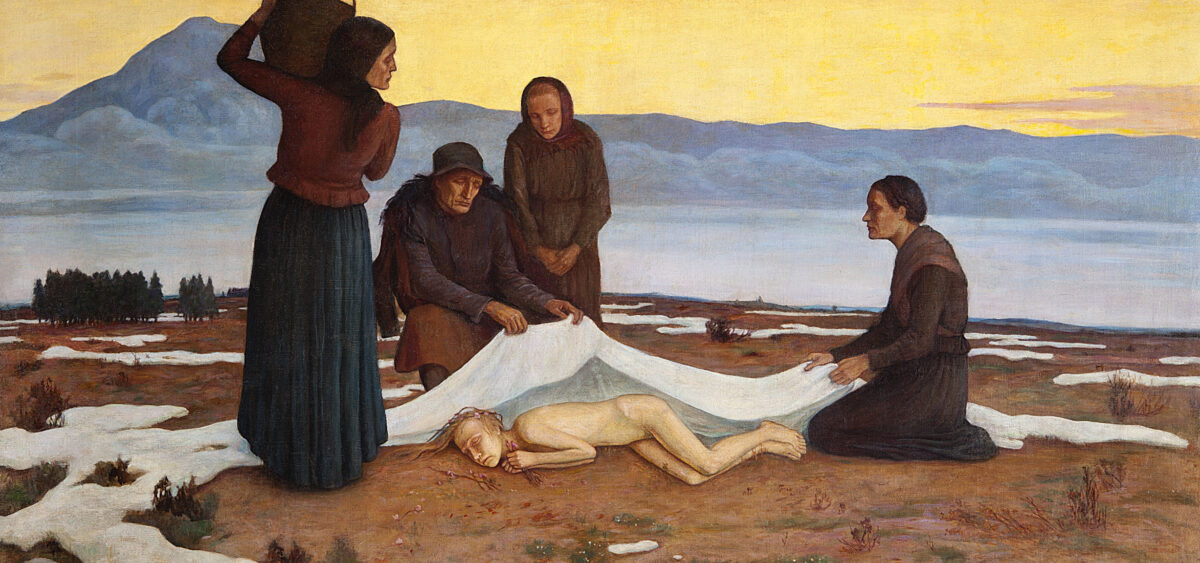The beauty of nature is always around us yet our busy on-the-go way of living can easily eclipse it and let this yearly phenomenon escape us. “Spring” is an essay excerpted from Henry David Thoreau’s 1854 classic collection of essays, Walden; or Life in the Woods wherein Thoreau experimented with simple living in semi-isolation, in nature, off the north shore of Walden Pond in eastern Massachusetts. A firsthand, very detailed account of the coming of spring after a long cold New England winter, and perhaps just what one needs to remember that nature is in fact, truly a work of art.
The opening of large tracts by the ice-cutters commonly causes a pond to break up earlier; for the water, agitated by the wind, even in cold weather, wears away the surrounding ice. But such was not the effect on Walden that year, for she had soon got a thick new garment to take the place of the old. This pond never breaks up so soon as the others in this neighborhood, on account both of its greater depth and its having no stream passing through it to melt or wear away the ice. I never knew it to open in the course of a winter, not excepting that of 1852 to 1853, which gave the ponds so severe a trial. It commonly opens about the first of April, a week or ten days later than Flint’s Pond and Fair-Haven, beginning to melt on the north side and in the shallower parts where it began to freeze. It indicates better than any water hereabouts the absolute progress of the season, being least affected by transient changes of temperature. A severe cold of a few days’ duration in March may very much retard the opening of the former ponds, while the temperature of Walden increases almost uninterruptedly. A thermometer thrust into the middle of Walden on the March 6th 1847, stood at 32°F, or freezing point; near the shore at 33°F; in the middle of Flint’s Pond, the same day, at 32.5°F; at a dozen rods from the shore, in shallow water, under ice a foot thick, at 36°F. This difference of three and a half degrees between the temperature of the deep water and the shallow in the latter pond, and the fact that a great proportion of it is comparatively shallow, show why it should break up so much sooner than Walden. The ice in the shallowest part was at this time several inches thinner than in the middle. In mid-winter the middle had been the warmest and the ice thinnest there. So, also, everyone who has waded about the shores of the pond in summer must have perceived how much warmer the water is close to the shore, where only three or four inches deep, than a little distance out, and on the surface where it is deep, than near the bottom. In spring the sun not only exerts an influence through the increased temperature of the air and earth, but its heat passes through ice a foot or more thick, and is reflected from the bottom in shallow water, and so also warms the water and melts the underside of the ice, at the same time that it is melting it more directly above, making it uneven, and causing the air bubbles which it contains to extend themselves upward and downward until it is completely honeycombed, and at last disappears suddenly in a single spring rain. Ice has its grain as well as wood, and when a cake begins to rot or “comb,” that is, assume the appearance of honey-comb, whatever may be its position, the air cells are at right angles with what was the water surface. Where there is a rock or a log rising near to the surface the ice over it is much thinner, and is frequently quite dissolved by this reflected heat; and I have been told that in the experiment at Cambridge to freeze water in a shallow wooden pond, though the cold air circulated underneath, and so had access to both sides, the reflection of the sun from the bottom more than counterbalanced this advantage. When a warm rain in the middle of the winter melts off the snow-ice from Walden, and leaves a hard dark or transparent ice on the middle, there will be a strip of rotten though thicker white ice, a rod or more wide, about the shores, created by this reflected heat. Also, as I have said, the bubbles themselves within the ice operate as burning-glasses to melt the ice beneath.






